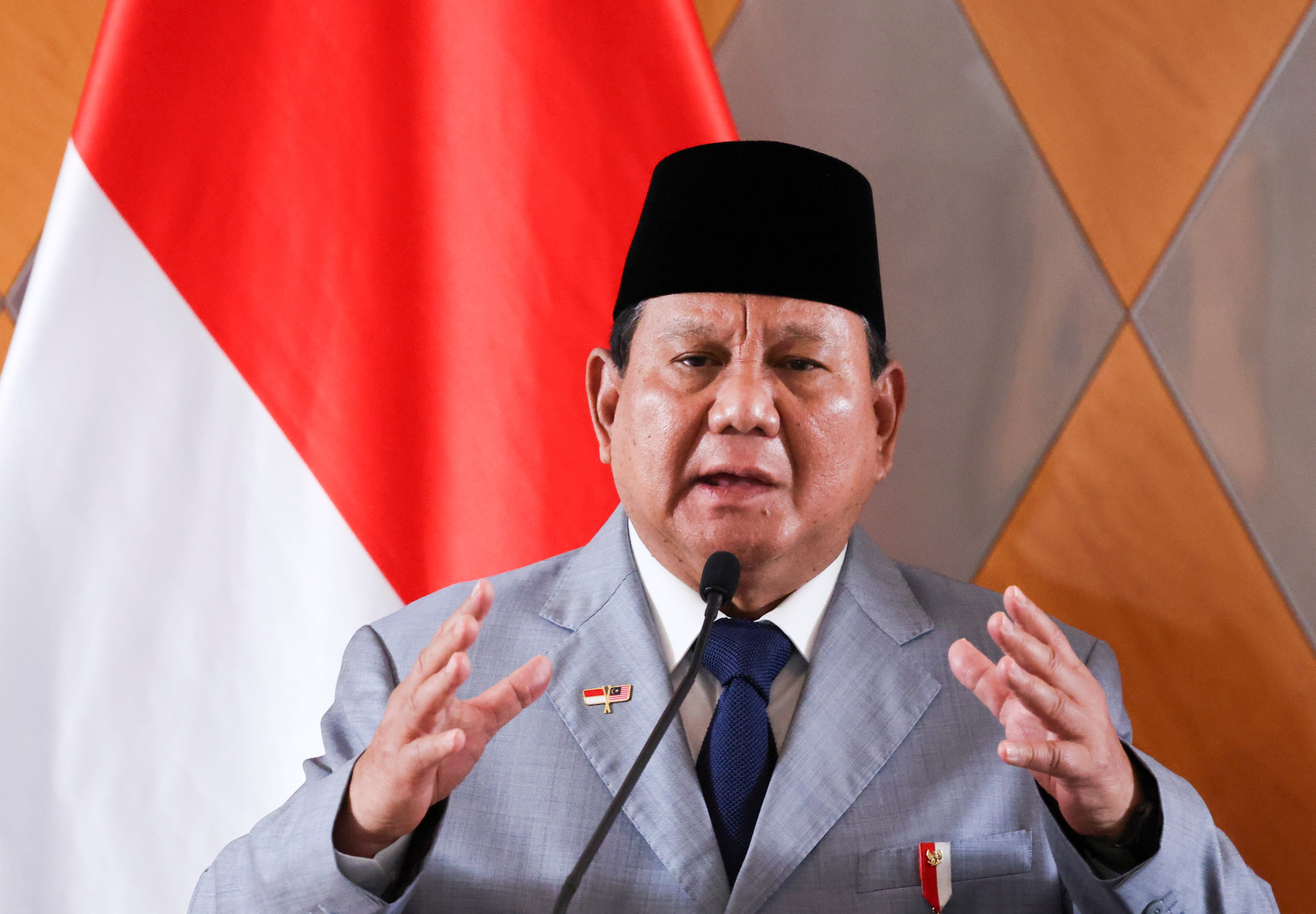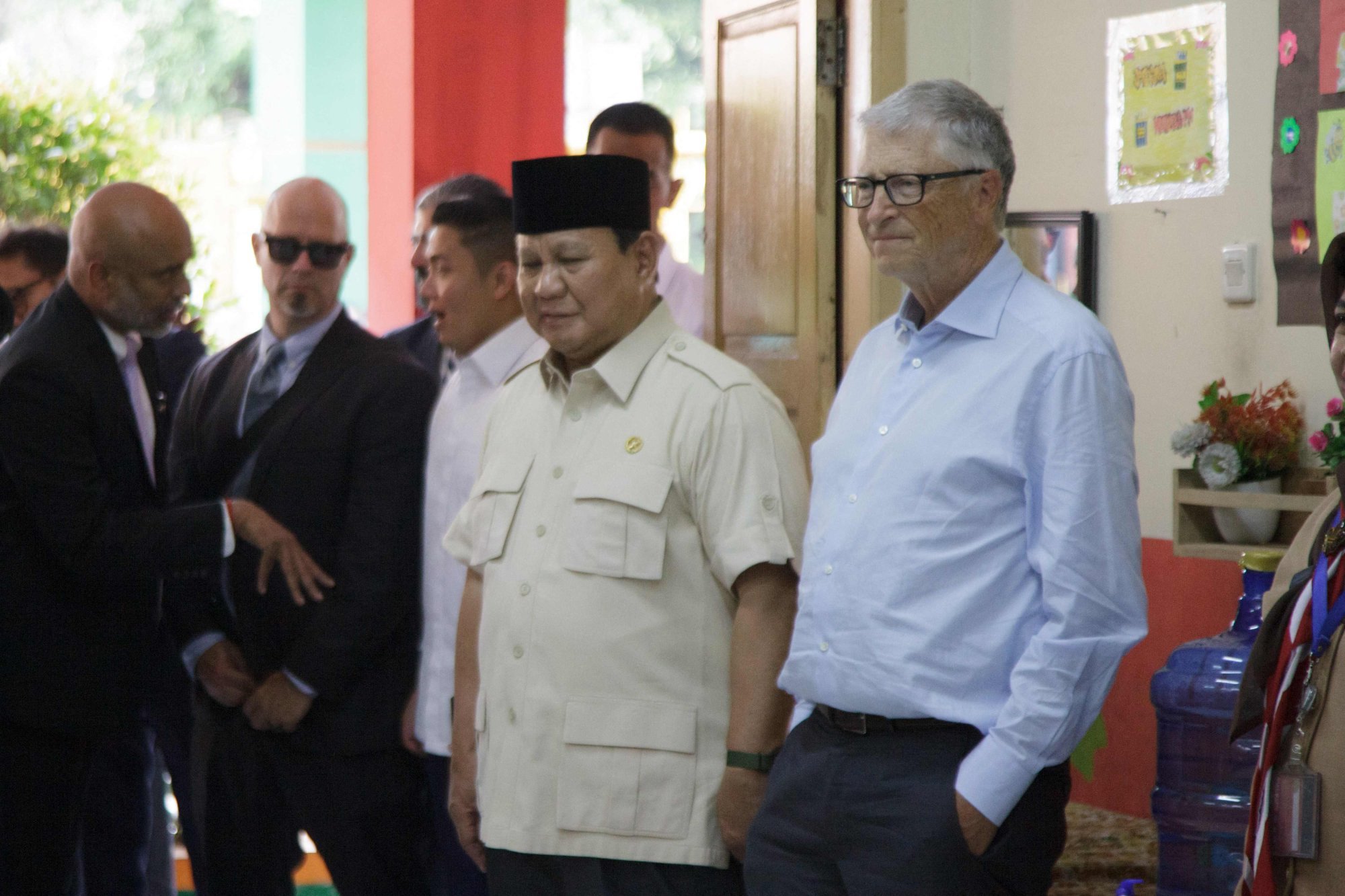Indonesia’s economy slows as US tariffs, fiscal pressures challenge Prabowo’s growth goal
Analysts expressed concerns that fiscal pressures, weak consumer spending, and the impact of US tariffs could worsen Indonesia’s economic outlook

Indonesia’s economy posted its slowest growth rate in over three years, with analysts warning that fiscal pressures, sluggish consumer spending, and the ripple effects of American tariffs could further dampen the country’s economic outlook this year.
According to official data released by Statistics Indonesia on Monday, the economy grew by 4.87 per cent year on year in the January to March period, down from 5.02 per cent the previous quarter.
The slowdown could challenge President Prabowo Subianto’s pledge to increase annual growth in Southeast Asia’s largest economy to 8 per cent by the end of his five-year term in 2029, analysts say.
Prabowo’s administration is contending with external pressures, including global economic headwinds from the US-China trade war and the threat of Washington’s hefty “reciprocal” tariffs, slated for 32 per cent.
Economists note that tightening fiscal constraints are hindering domestic growth. At the beginning of the year, Prabowo’s government implemented spending cuts and reallocations to finance his flagship programmes, leading to a slowdown in public spending.
These programmes include a US$4.4 billion allocation this year for a free meal initiative for children and expectant mothers, as well as a controversial new sovereign wealth fund with an initial commitment of US$20 billion.
Due to these costly plans, Jakarta’s tight financial position prompted Prabowo to announce widespread austerity measures in February. Budget cuts for ministries such as education and public works totalled nearly US$19 billion, or 8.5 per cent of overall public-sector spending.
Bhima Yudhistira, executive director at Jakarta-based think tank Celios, noted that the budget cuts had stalled ongoing government projects, leaving Indonesia without new growth drivers or monetary initiatives to stimulate the economy.
“The first quarter of 2025 was a bad economic performance for Indonesians,” Bhima said. “We are seeing weak purchasing power for consumers in Indonesia, and huge lay-offs are affecting a lot of industries and especially the manufacturing sector.”
According to Dandy Rafitrandi, an economic researcher at the Centre for Strategic and International Studies (CSIS) Indonesia, economists expected that weak public and government spending would lead to growth below 5 per cent.
Dandy noted that household spending – typically the backbone of growth – grew by only 4.89 per cent, marking its slowest pace in over a year. This was despite seasonal drivers like Ramadan and Eid, typically peak travel and consumer spending times.
Meanwhile, government expenditure contracted by 1.38 per cent over the same period, further dampening growth momentum, he added.
“I think the slowdown reflects deeper concerns over the direction of macroeconomic policy, particularly on the fiscal front, where increased uncertainty surrounding budget reallocations and new government priorities has dampened investor confidence,” he said.

Investors wary
Josua Pardede, chief economist at Permata Bank, said that while global trade tensions and weak household consumption were key contributors, fiscal tightening under Prabowo’s administration and stalled investments had been “equally pivotal in dragging down overall growth”.
“These dynamics raise serious questions about the achievability of Prabowo’s 8 per cent growth target,” he added.
Investors in Indonesia are worried about slowing consumption, a shrinking middle class, and reduced purchasing power, while uncertainty about Prabowo’s economic agenda is causing hesitation in asset purchases.
After Prabowo’s budget cut announcement in March, market jitters escalated, leading to a sharp sell-off that triggered a 30-minute trading halt – Indonesia’s first stock market suspension since 2020. At the time, the rupiah fell to its lowest level since the 1998 Asian financial crisis, but it has since strengthened.
“Many investors are ‘wait-and-see’, delaying capital commitments until there is greater clarity on economic direction under the new administration,” Dandy from CSIS said.
Coordinating Economic Minister Airlangga Hartarto told reporters at his Jakarta office on Monday to wait for the second-quarter GDP data, which is expected to reflect increased state budget spending, “so the growth momentum can be maintained”.
With the government tightening its budget through austerity measures and spending cuts, economic growth could face further strainBhima Yudhistira, analyst
Analysts warn that Indonesia’s growth may remain below 5 per cent this year unless the government introduces additional fiscal stimulus.
“With the government tightening its budget through austerity measures and spending cuts, economic growth could face further strain,” Bhima said. “Public expenditure is likely to slow, creating additional burdens on the economy.”
Josua from Permata Bank said achieving Prabowo’s ambitious 8 per cent growth target would require a fundamental shift in consumption and investment trends, along with structural productivity improvements and a significant recalibration of fiscal and monetary policies.
“Without aggressive pro-growth interventions – including targeted stimulus, improved social safety nets to boost demand, and de-risking private investment through regulatory certainty – such a target appears increasingly aspirational rather than realistic,” he said.